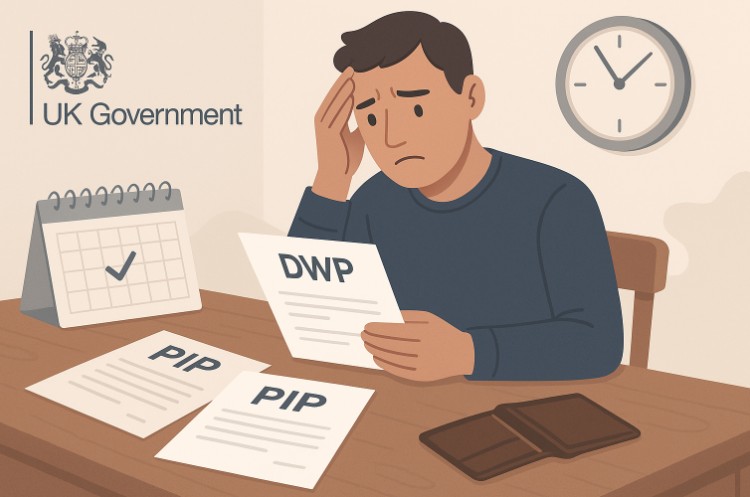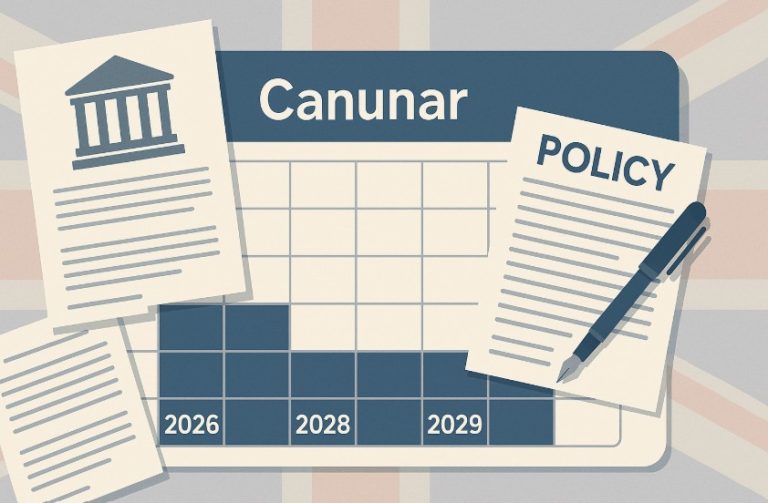For those navigating the UK benefits system, the Severe Disability Premium (SDP) is a crucial but often misunderstood support payment.
It provides extra financial help for people with severe disabilities who meet specific criteria and are receiving certain benefits. But how much is the severe disability premium, and who exactly qualifies for it?
This comprehensive guide outlines everything UK residents need to know about the amount, eligibility, and application process related to the Severe Disability Premium in 2025.
What Is the Severe Disability Premium in the UK?
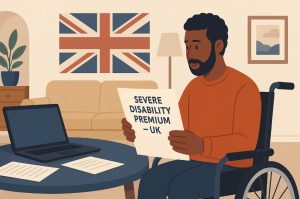
The Severe Disability Premium (SDP) is an extra amount of financial support added to certain means-tested benefits for individuals with severe disabilities.
It is not a separate benefit that can be applied for independently, but rather an additional payment included in qualifying benefits.
To receive SDP, individuals must meet specific conditions, particularly in relation to other benefits they receive and their living arrangements.
It helps those with significant care needs who are not being supported by a carer claiming a carer’s benefit.
Definition and Purpose
Severe Disability Premium is designed to:
- Provide extra help to disabled individuals with limited income
- Recognise the additional costs associated with living independently while managing a disability
- Support those who do not receive informal care supported by a Carer’s Allowance or equivalent
How It Fits into Other Benefits?
The premium is automatically included in the calculation of:
- Income Support
- Income-based Jobseeker’s Allowance (JSA)
- Income-related Employment and Support Allowance (ESA)
- Housing Benefit
Claimants receiving these benefits who meet the SDP criteria will have the premium added to their payments without needing to submit a separate application.
How Much Is the Severe Disability Premium Worth in 2025?
The amount paid varies depending on whether the claimant is single or part of a couple, and whether both partners qualify. The payment is made weekly and included in the total benefit payment.
Weekly Amounts
| Situation | Weekly Payment |
| Single person | £82.90 |
| Couple (both eligible) | £165.80 |
| Couple (only one eligible) | £81.50 |
These rates reflect the standard weekly additions as of 2025.
Payment Frequency and Structure
Severe Disability Premium is paid weekly along with the qualifying benefit. Payments are made directly into a bank or building society account, just like regular benefit payments.
It is not a taxable amount and does not affect tax obligations. However, it does contribute to the total benefit income and may be affected by the benefit cap for those under State Pension age.
Who Is Eligible for the Severe Disability Premium?
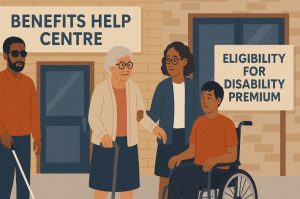
Eligibility for the Severe Disability Premium is subject to very specific criteria. Not everyone who has a disability or receives disability benefits will automatically qualify.
Key Eligibility Conditions
The claimant must:
- Receive one of the qualifying income-related benefits such as Income Support or income-related ESA
- Be entitled to a qualifying disability benefit
- Live alone or be treated as living alone
- Not have someone receiving Carer’s Allowance, Carer Support Payment, or the carer element of Universal Credit for looking after them
Qualifying Disability Benefits
To receive SDP, a person must be getting one of the following:
- Personal Independence Payment (PIP) daily living component
- Attendance Allowance
- Disability Living Allowance (DLA) care component at the middle or highest rate
- Adult Disability Payment (ADP) daily living component (standard or enhanced)
- Armed Forces Independence Payment (AFIP)
- Constant Attendance Allowance (linked to Industrial Injuries Disablement Benefit or War Pension)
If none of these benefits are in payment, the person will not qualify for the premium.
Living Arrangements
Living arrangements play a key role. Individuals may still be considered as living alone if:
- They live with someone who also qualifies for SDP
- The other adult is registered blind
- The other person is a boarder, lodger, or subtenant and pays separate rent
- They are a close relative under the age of 18
If anyone receives Carer’s Allowance or the carer component of Universal Credit for looking after the claimant, the SDP will not be payable.
Can You Claim Severe Disability Premium with Other Benefits?
Yes, the Severe Disability Premium (SDP) is designed to be claimed alongside certain legacy, income-related benefits. However, it cannot be combined with every type of benefit. The key is understanding which benefits allow for SDP and under what conditions.
SDP is not a standalone benefit and is only available as a top-up to a qualifying means-tested benefit. If you are not receiving a base benefit that supports premiums, you cannot get SDP, even if you meet the disability and living arrangement criteria.
Eligible Benefits That Include Severe Disability Premium
SDP can be included in the following types of income-related benefits:
Income Support
If you’re on Income Support, the SDP can be added to your payment if:
- You receive a qualifying disability benefit (e.g. PIP daily living component, Attendance Allowance)
- You live alone (or are treated as living alone)
- No one is receiving Carer’s Allowance or the carer element of Universal Credit for looking after you
This is one of the most common pathways for people under State Pension age to receive SDP.
Income-Based Jobseeker’s Allowance (JSA)
Individuals receiving income-based JSA may also qualify for SDP, provided all eligibility conditions are met. As JSA is designed for those actively seeking work, the overlap with severe disability conditions is rare but possible.
Income-Related Employment and Support Allowance (ESA)
For ESA claimants, only those on the income-related version of the benefit are eligible for the Severe Disability Premium. Those receiving contribution-based ESA are not entitled to SDP.
To receive SDP with income-related ESA, you must:
- Be in receipt of a qualifying disability benefit
- Satisfy the living alone criteria
- Ensure no one is claiming Carer’s Allowance or equivalent for you
You may also be entitled to the Enhanced Disability Premium if you’re in the ESA support group and meet the additional eligibility rules.
Housing Benefit
SDP can also be factored into your Housing Benefit calculation. If you meet all conditions for the premium, the amount you’re entitled to under Housing Benefit can increase to reflect your additional needs. This can be helpful for those living in rented accommodation who need support covering housing costs.
Incompatible Benefits
There are several benefits with which you cannot claim SDP. The most notable is Universal Credit. If you are currently receiving Universal Credit, SDP is not part of the entitlement structure.
Also, people receiving contribution-based benefits only, such as contribution-based JSA or ESA, do not qualify for SDP. These benefits are based on National Insurance contributions and not on income levels, so they do not support the addition of disability premiums.
Receiving Multiple Premiums
It is possible to receive more than one type of disability premium at the same time. For example, an individual might receive:
- Disability Premium
- Enhanced Disability Premium
- Severe Disability Premium
Each of these has its own criteria, but they can be combined within your income-based benefit if you qualify for more than one. This can significantly increase your total weekly benefit payment.
Understanding which benefit combinations allow for the Severe Disability Premium is essential to ensure you’re not missing out on financial support you’re entitled to.
How Do You Apply for Severe Disability Premium?

There is typically no need to make a separate claim for SDP. If the eligibility conditions are met, the premium should be automatically added by the DWP or your local council, depending on the benefit.
When Automatic Payments Apply
If a person is receiving a qualifying benefit and meets all eligibility criteria, the premium is automatically added. This includes cases where both a disability benefit and an income-related benefit are in place.
What to Do if You Think You Should Be Getting It?
If the premium is not appearing in benefit payments despite eligibility, the claimant should:
- Contact Jobcentre Plus or their local authority
- Request a review of their benefit calculation
- Provide evidence of disability benefit entitlement and living situation
If a mistake has been made, the premium can be backdated and paid for the time the person was eligible but not receiving it.
Can You Get Severe Disability Premium with Universal Credit?
No, Severe Disability Premium is not part of Universal Credit (UC). When Universal Credit was introduced to replace legacy benefits, the SDP was not carried over. As a result, claimants receiving Universal Credit are not eligible for this premium, even if they meet all the conditions that would have applied under the old benefits system.
This exclusion has been a significant point of concern for disabled claimants and has led to legal challenges and policy changes, particularly around how existing claimants were transitioned to Universal Credit.
Why Severe Disability Premium Is Not Included in Universal Credit?
Universal Credit is designed to simplify the benefits system by replacing six existing benefits with one monthly payment. However, in doing so, it removed several legacy features, including all three types of disability premiums:
- Disability Premium
- Enhanced Disability Premium
- Severe Disability Premium
Instead, UC includes disability elements within its structure, such as:
- The limited capability for work (LCW) element
- The limited capability for work and work-related activity (LCWRA) element
- The carer element
These elements are not direct replacements for the premiums found in legacy benefits. In most cases, the financial value of these UC components is lower than what some individuals received through SDP, leading to reduced overall support for some claimants.
What Happens If You Move to Universal Credit from a Legacy Benefit?
If you were receiving a benefit that included SDP and then moved to Universal Credit, you would lose the SDP. This applies even if your circumstances remain the same.
For example, if you were receiving:
- Income-related ESA
- Housing Benefit
- SDP
and then switched to Universal Credit, the SDP would no longer be included in your entitlement. This could result in a significant reduction in your weekly income.
Transitional Protection for Previous Claimants
In response to criticism and legal cases, the government introduced transitional protection for certain claimants. This is a temporary financial top-up for people who:
- Were previously receiving SDP
- Had not voluntarily switched to Universal Credit
- Were moved to UC through a managed migration process
Transitional protection is:
- Time-limited and will decrease over time
- Forfeited if your Universal Credit claim ends and is restarted later
- Reduced if your circumstances change (e.g. new income, household changes)
The transitional protection was designed to soften the financial impact of moving to UC, but it is not permanent and does not apply to all claimants.
Advice Before Switching to Universal Credit
Before switching from legacy benefits to Universal Credit, especially if you’re receiving the Severe Disability Premium, it’s essential to:
- Use an independent benefits calculator to see how your income would be affected
- Seek advice from a welfare rights advisor or Citizens Advice
- Avoid voluntarily switching unless absolutely necessary
For many, remaining on legacy benefits for as long as possible ensures continued access to SDP, which can be worth up to £165.80 per week for eligible couples.
Understanding the relationship between Universal Credit and the Severe Disability Premium is crucial in making informed decisions about your benefits and avoiding unintended financial losses.
Can the Severe Disability Premium Be Backdated?

It is possible to request backdating of the SDP under specific conditions. If the claimant met the criteria for the premium but it was not paid, the DWP may issue back payments.
Backdating Scenarios
Backdating is more likely in situations where:
- The claimant was unaware they qualified
- An administrative error occurred
- They only recently began receiving a qualifying disability benefit
Maximum Periods for Backdating
| Circumstance | Maximum Backdate |
| Standard claim delay | 3 months |
| DWP or council error | Potentially longer (case-specific) |
In some complex cases, such as successful benefit appeals or revisions of previous decisions, backdating can extend well beyond the typical three-month limit.
What Happens If Circumstances Change?
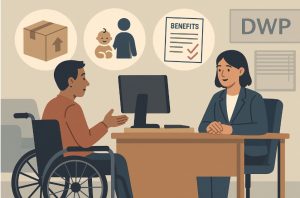
Life circumstances can directly affect eligibility for the Severe Disability Premium. DWP must be informed promptly of any change that could impact a claimant’s benefit entitlement.
Changes That Must Be Reported
- Starting or stopping a qualifying disability benefit
- Someone moving into or out of the home
- A carer beginning to claim Carer’s Allowance or the carer element of Universal Credit
- Moving from a legacy benefit to Universal Credit
Failure to report changes can lead to incorrect payments and possible overpayment recovery by DWP.
Losing and Regaining Eligibility
If someone loses SDP due to ineligibility but later meets the conditions again, the premium can be reinstated. The claimant must notify the relevant authority and request reassessment of their entitlement.
Conclusion: Is the Severe Disability Premium Still Worth Claiming in 2025?
Despite being phased out under Universal Credit, the Severe Disability Premium remains a significant financial support for those still on legacy benefits. At up to £165.80 per week, it can make a meaningful difference to people with higher care needs and limited support.
Those who meet the criteria should ensure they are receiving the correct payments and seek help if their situation changes or if they suspect they’ve missed out.
FAQs About Severe Disability Premium
What makes someone ‘severely disabled’ under UK benefits rules?
A person is generally classed as severely disabled if they receive specific care-related disability benefits and live alone without a carer receiving Carer’s Allowance for them.
Does everyone on PIP qualify for the Severe Disability Premium?
Not automatically. Only those on the daily living component of PIP, and who meet the other eligibility requirements, qualify for SDP.
Can a person living with family still get the premium?
Yes, in certain cases for example, if the other adults are subtenants, registered blind, or make separate rent payments.
Is Severe Disability Premium the same as Disability Living Allowance?
No. DLA is a disability benefit, while SDP is an additional premium added to other means-tested benefits.
Why is Severe Disability Premium not part of Universal Credit?
Universal Credit replaced legacy benefits, and SDP was not carried over. Transitional protection may apply in some cases.
How do I know if I’m already receiving the premium?
Check your benefit breakdown letter from DWP. It should clearly list the Severe Disability Premium if you’re receiving it.
What should I do if I think I’ve missed out on payments?
Contact Jobcentre Plus or your local benefits office and request a review. You may be able to backdate your claim if you were eligible.


